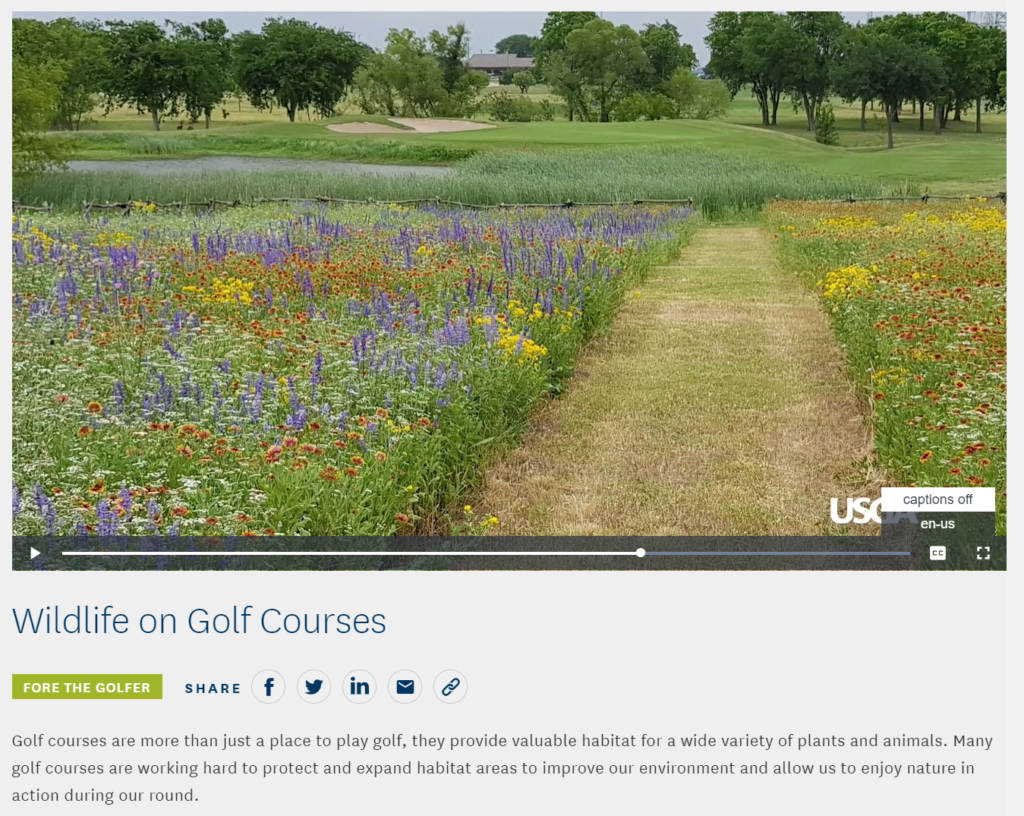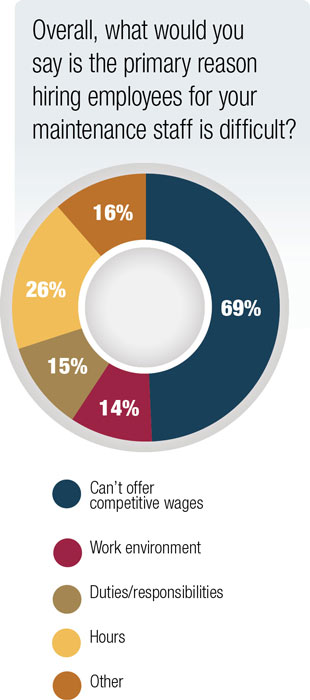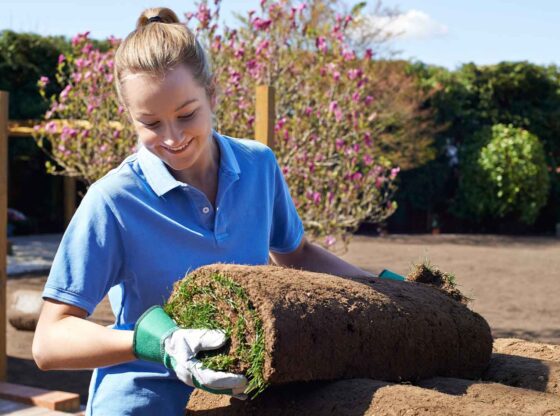Wolf Creek Company has been a player in the irrigation evolution, and we have seen many waves of change. In our previous article, ‘Next-Gen Brings Golf Growth,’ we spoke about the changes and resulting opportunities in the golf world, specifically regarding the changing culture and game. In this article, we look at how we can adapt to better the field of golf irrigation for people, products, and the planet.
Like the roof on the clubhouse, irrigation is a necessary utility to operate a golf course. However, not nearly enough courses plan to invest in their irrigation. Market evolution has considerably changed the golf irrigation industry. Also, how superintendents acquire and manage irrigation is different from 30 years ago. Let’s take inventory of the current state of golf irrigation affairs.
Environmental Concerns
The environmental crowd views golf courses as evil who accuse the industry of several harmful ecological impacts. There is some truth in what they say, however, there are many half- and untruths. And where there is truth, we can rectify the problems. The following paragraphs address each of the concerns and how you, the golf superintendents, can address these issues. Make sure you let your ‘new players’ know you are aware of their concerns and what you are doing about them.

Do Golf Courses Waste Water?
A golf course is a large tract of turfgrass, and many consider turf a water-wasting cover crop. However, it is not that simple. Grass has been a staple everywhere; even dominant plants in semi-arid regions are grasses. Simply put, the grass itself is not to blame.
If we want to point fingers about wasting water, they should point at outdated irrigation systems and their operators. Unfortunately, many superintendents must make do with an old system that does not provide enough control, and the result is overwatering. A well-designed and installed irrigation system will allow them to conserve water, that is, if the operators use them correctly.
In arid regions, where water is in short supply, turfgrass can pose a water problem. In those areas, golf courses can opt for low-water native seed varieties. If you use those varieties in combination with minimized turf acreage and good irrigation practices, we can still enjoy having a golf course without unbalanced water use.
In summary, turfgrass can be a very efficient water user if the correct varieties of sod, updated irrigation systems, and correct irrigation practices are used.
Golf Course Runoff Pollution
The EPA has been very concerned about runoff everywhere, and rightly so. Runoff from natural rainfall or over-irrigation can carry chemicals and fertilizers into surface water such as creeks, rivers, and lakes. We can significantly reduce runoff pollution by proper application of chemicals and fertilizers and good irrigation practices. As with water application, to reduce runoff pollution, the irrigation system is a crucial tool.

Biodiversity and natural preservation
There are accusations that golf courses are too monocultural, lacking plant and wildlife variety, and that courses are wasted space that should be a natural preserve. The reality is quite the opposite. Especially in recent years, diversity has grown as golf courses designate more acreage to natural vegetation and even added plants to feed and encourage a variety of wildlife. A few years ago, this University of Melbourne study found more plant and animal life diversity on a typical golf course than on nearby parkland. Another study by the University of Rhode Island showed that golf courses offer a better alternative for pond-breeding amphibians than native disappearing wetlands. Golf courses can choose from many ways to participate in environmental improvements using programs such as ‘Monarchs in the Rough’ or the Audubon ACSP for Golf. The USGA Wildlife Links program offers many more resources.
Golf courses are enjoyable places where many people enjoy an outdoor sport, and courses can be exceptionally kind to nature and our environment. Irrigation is part of what supports this beautiful atmosphere. We recommend that you take environmental action on your course and let your golfers and community know about it.

Taking Stock of Irrigation
In the past, a course would have a supply of irrigation parts on hand ready for minor upgrades and repairs. Wolf Creek Company used to do a brisk business with spring stock-up programs, but not anymore. Only a few courses are carrying any stock of irrigation parts. This practice is not a concern if distributors and other suppliers can fill the need for parts promptly, which may be a gamble at times.
Cash Flow Concerns
Golf course owners and operators have always been a cost-conscious lot, as they should be. However, concerns resulting from the recession in 2000 were further amplified by the 2008 recession. Furthermore, the declines in the golf business from 2000 to 2018 added deep financial stress to the business of running a golf course. The volatility of the golf industry has impacted the irrigation industry in the following ways.
Irrigation Upgrades for Strategic and Environmental Success
Many superintendents do not consider “Opportunity Cost.” In other words, if your grounds team was not spending so much time fixing irrigation issues and dealing with the weak areas of the system, what improvements could they invest their time in that helps your course attract and keep golfers?
Your irrigation system is a long-term investment at the core of your business success. A sound system with proper maintenance will avoid significant expenses for at least ten and as much as 20 years. It was common for courses to do minor and major irrigation upgrades a few decades ago, and distributors and manufacturers supplied several complete systems upgrades every year. However, recent financial stress caused cash flow concerns, and now superintendents struggle to get money to upgrade their systems. Owners have rightfully been very skittish about investing more into their course for fears of another slow down and lack of revenue growth.
Little inventory and cash flow concerns result in many irrigation systems being held together by duct tape and chewing gum. That’s a joke, of course, but superintendents have been working their tails off to keep their system in operation and covering the weak spots. However, after a while, this patching-the-irrigation-system will become too great a cost in material, time, hassle, and lost opportunity compared to an upgrade. Your irrigation system is a strategic investment, and it deserves to factor in your strategic advantage, especially in marketing yourself to your current and prospective golfers. You can then brag to your customers that you are saving 50% on watering and have eliminated runoff!

We recommend that you accrue the cost of upgrades over a 10 to 20-year period. We also recommend that you consider financing the upgrade to spread cash outlay over a 5, 10, or 15-year period. Wolf Creek Company has a trusted partner for financing in Ryan Capital Irrigation Finance; check them out.
A final option worth mentioning is crowdsourcing your upgrades. Organize a team of golfers or members to form a crew to help with the irrigation work at hand. You’ll be surprised how many want to be part of rebuilding “their” course. A golfer claiming your course as “their” course means a customer for life!
Labor Shortage has a Price
No matter what kind of business you run, finding good staff is always a challenge. With the recent downturn, the size of golf course crews has shrunk, and the tenure of crew members has shortened. As a result, knowledgeable staff members are harder to find, and superintendents have to step up to fill the voids.

For irrigation systems, it means there are fewer knowledgeable irrigation members on crews. Given that irrigation is a complex system that must be operated correctly to gain the benefits mentioned, the need for experienced irrigation people is real.
This shortage of staff affects not only golf courses but all partners in the irrigation supply channel.
To help alleviate these issues, let’s consider these two parts: pay and culture.
Better Pay
Compared to other labor-intensive industries, golf courses have been on the low side of pay. For example, landscape companies are paying $15 and higher for their basic labor. People are like mowers; you get what you pay for. Want better people? Pay more reward.
Culture of Investing and Rewarding
The best way to attract and keep staff is to have a fun and rewarding company culture. Company culture will always exist, and all in the company are better off if it is actively created by management. Bad company culture takes a few years to correct, but you can do it. People want to work where they feel good about what they do and are comfortable economically. BTW, people who love where they work are willing to exist at a lower level of the pay scale. Culture trumps everything!
How can irrigation help company culture? Nobody enjoys dealing with a failing irrigation system. However, when management invests in the systems and tools for their staff, it proves that management cares about their people and wants to improve their business. Workers realize that they have a future at your course and are more likely to stay on board. Compared to a company with a culture always focused on cutting costs, which demotivates staff.

Supply Channel Consolidations and Complexities
Many changes are happening with manufacturers and distributors that support the golf world. Courses that were accustomed to calling their local distributor for capable support are now left disappointed. The most concerning for golf courses is the new multi-discipline nature of your supplier. Only a few golf-focused irrigation supply houses remain, and most carry an abundance of different product lines, which reduces specialized knowledge. While it may be convenient to have one supplier handle much of what you need, there is a hole in the market for folks with deep golf irrigation knowledge.
Some of your suppliers have consolidated into larger national enterprises, often reducing golf irrigation service staff. Simply put, nobody can afford them because, over the past 25 years in golf irrigation sales, margins collapsed, and the pay of good irrigation service people exploded.
Golf irrigation has become very complex, especially the irrigation control systems; the level of complexity is easily ten-fold more than 30 years ago. Compound that complexity with the brain drain in our supply channel, and we are at the point that only a few knowledgeable and experienced irrigation people remain. Part of this brain drain is generational since not enough younger people have entered the golf irrigation business as Boomers moved on. Another cause for the reduction in expertise is that the low volume of golf irrigation business over the past 15 years has caused suppliers to transfer assets and focus on other product lines.

Keep Playing the Game of Golf Business
Manufacturers and golf irrigation service contractors are slowly developing to fill the expertise void. Distribution companies are not sitting idle; instead, they attempt to redevelop people and systems to address specialized golf irrigation support. However, the lack of willing young people and the continued low revenue stream from golf irrigation sales are slowing down their efforts. We will need to give it time because market evolutions are messy and filled with trial-n-error experimentation.
We have given you a whole lot to mull over! Where there is an opportunity, it comes with a demand for hard work. Those who see opportunity, figure out how to do it, and have the guts to stick with it will be the leaders for others to follow suit. Best of fortune to you as you play the game of golf business!
Contact your Wolf Creek branch to discuss upgrading your system, and you will help save water, money, and the environment all at once. Please remember to ask about our affordable equipment financing.












